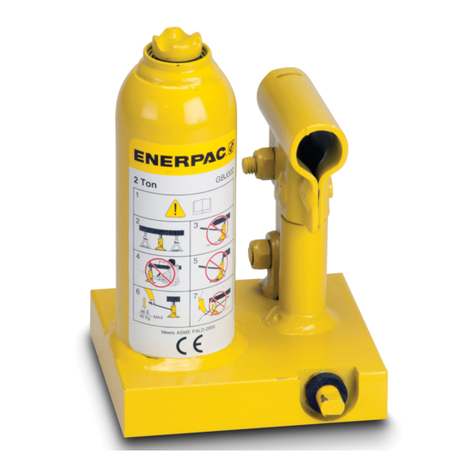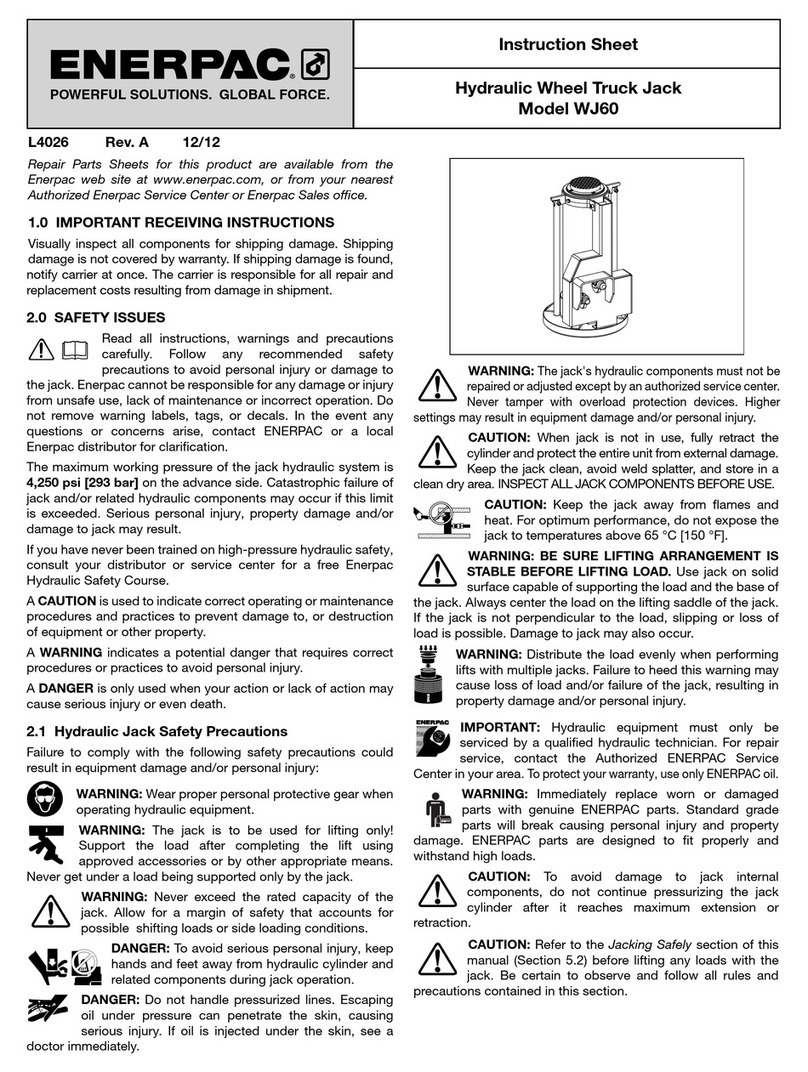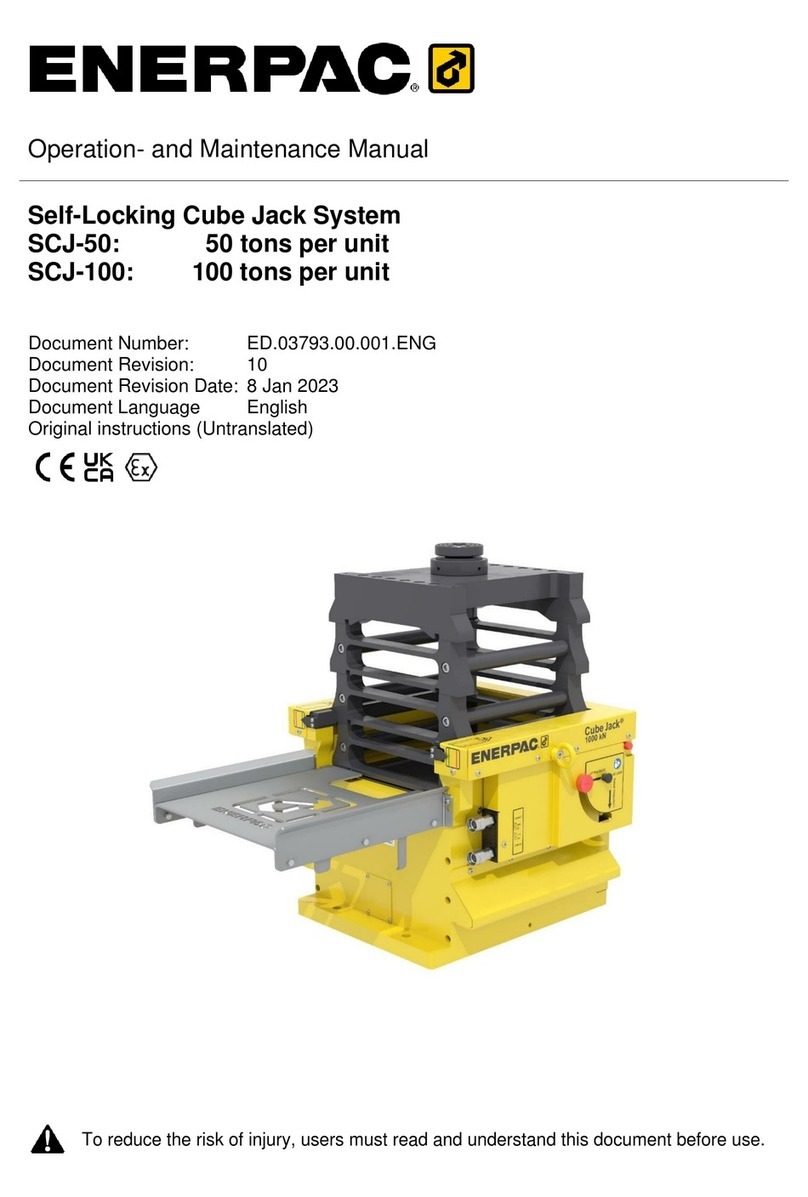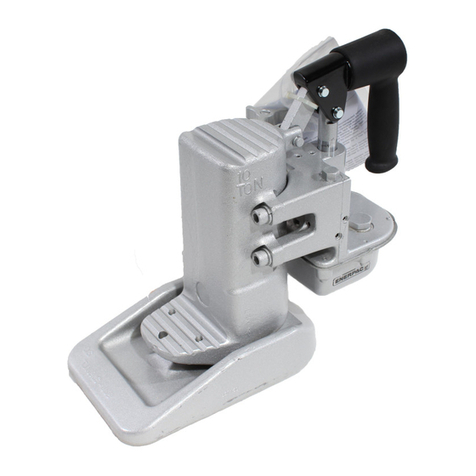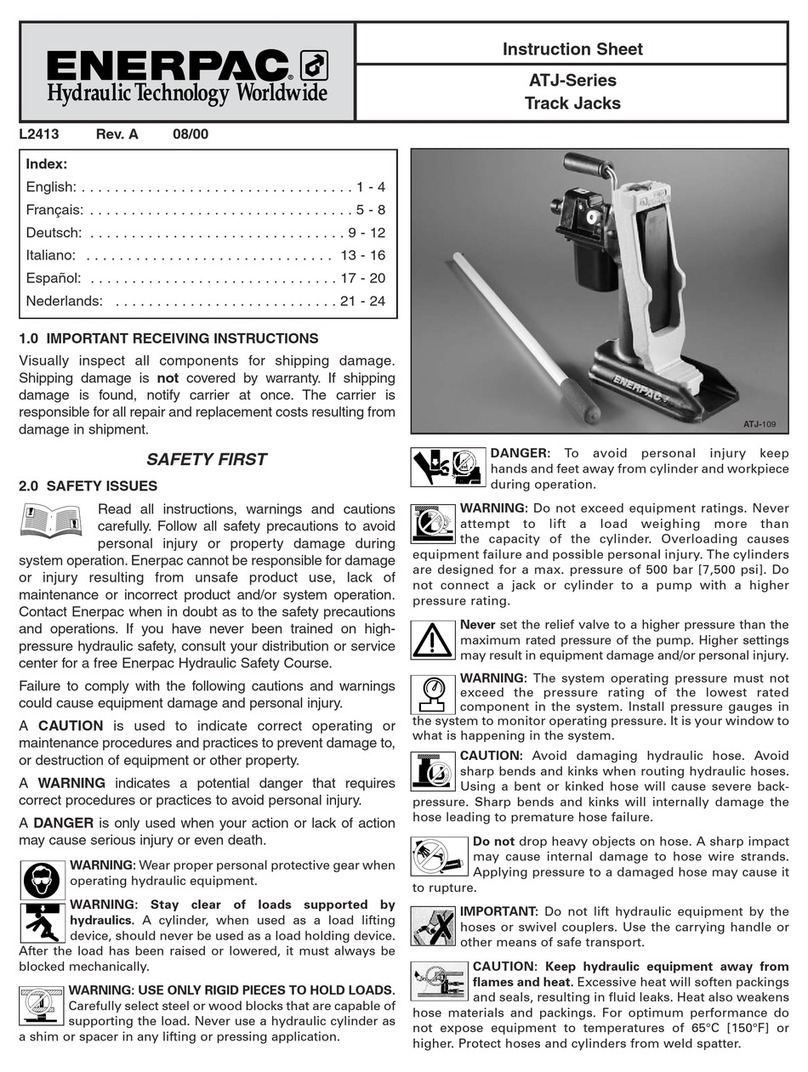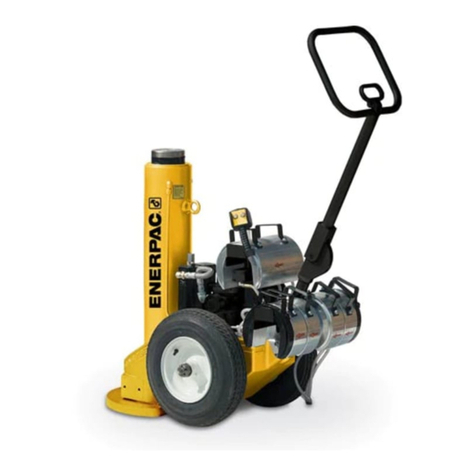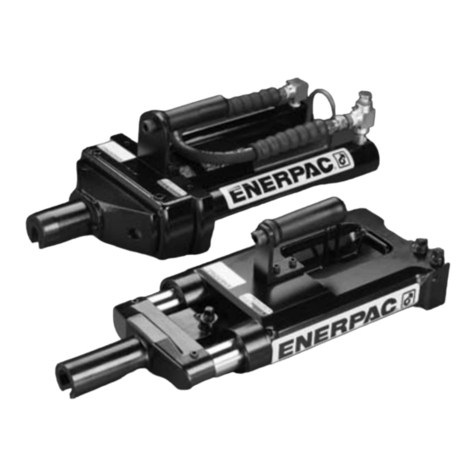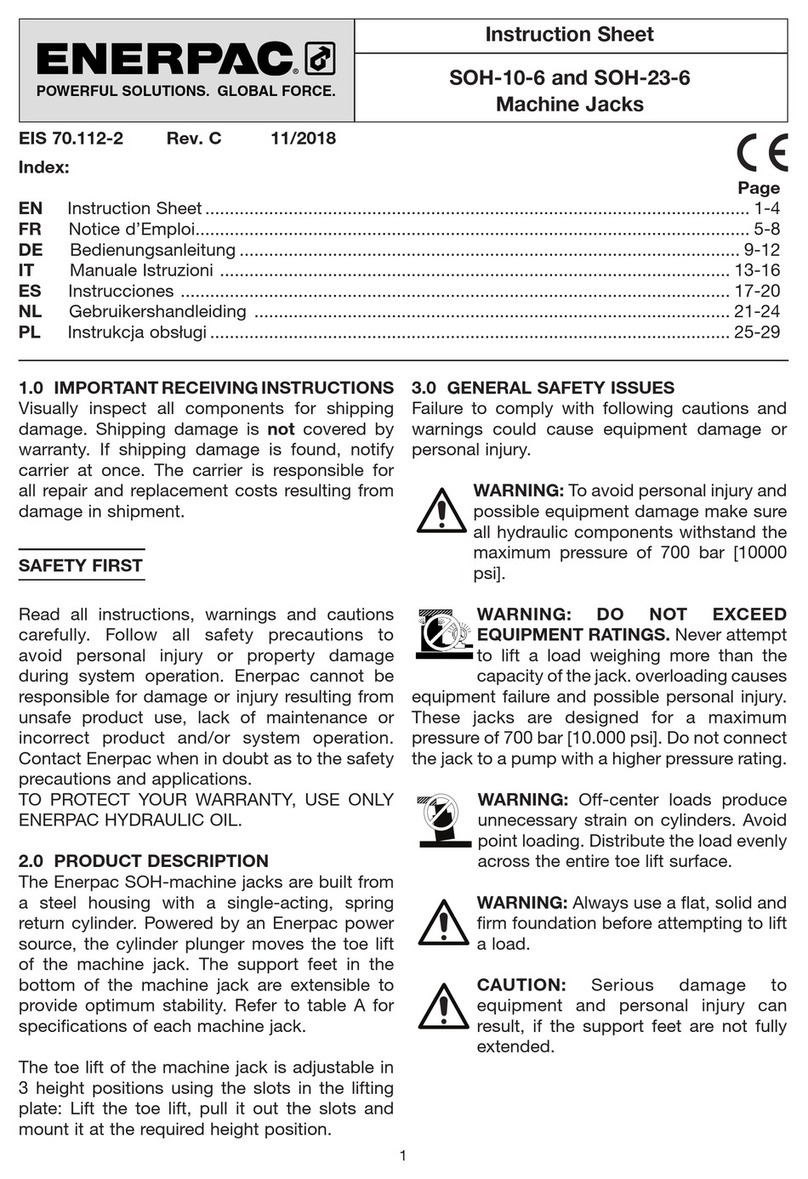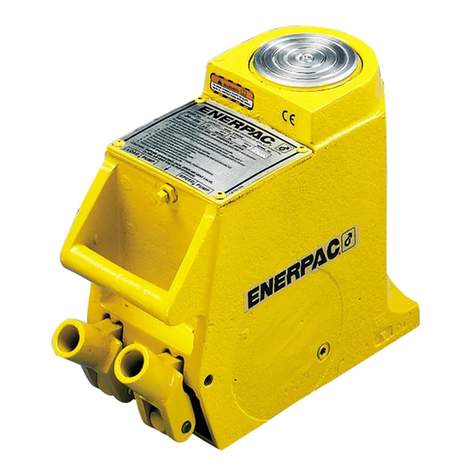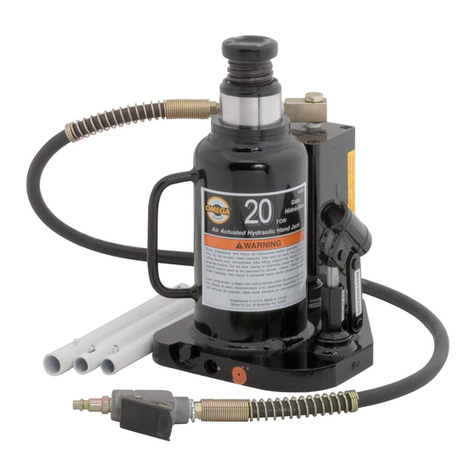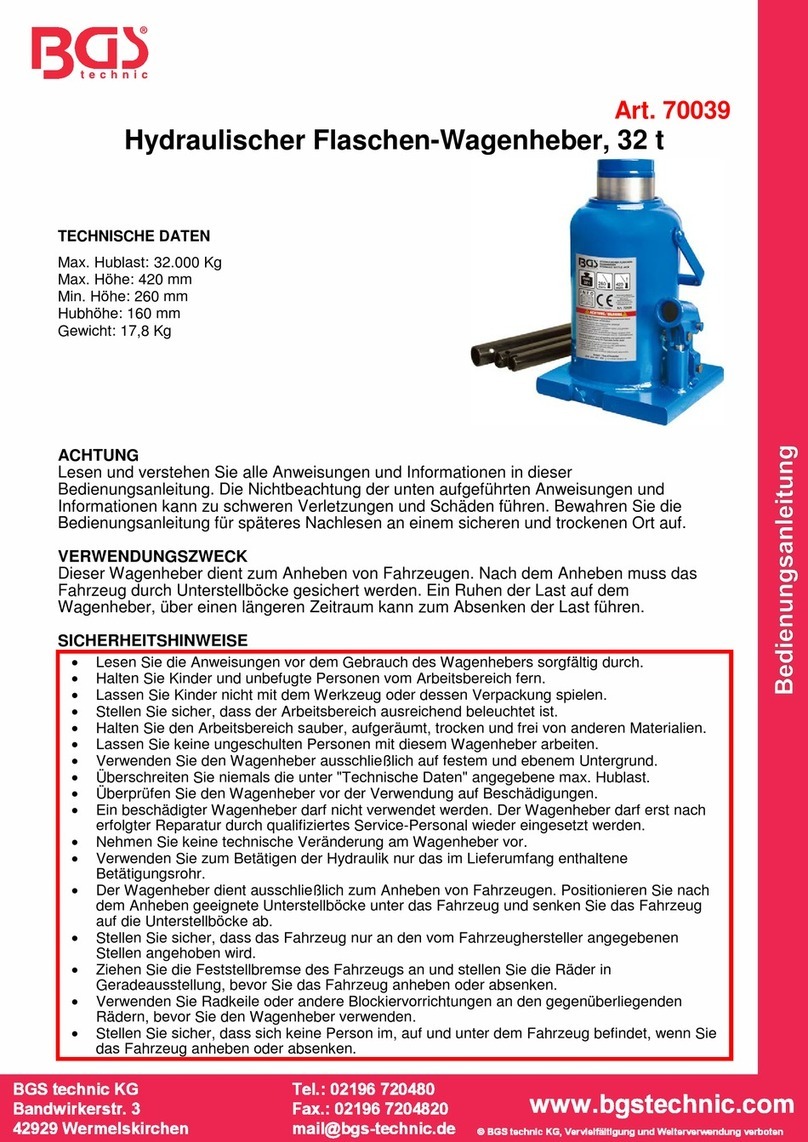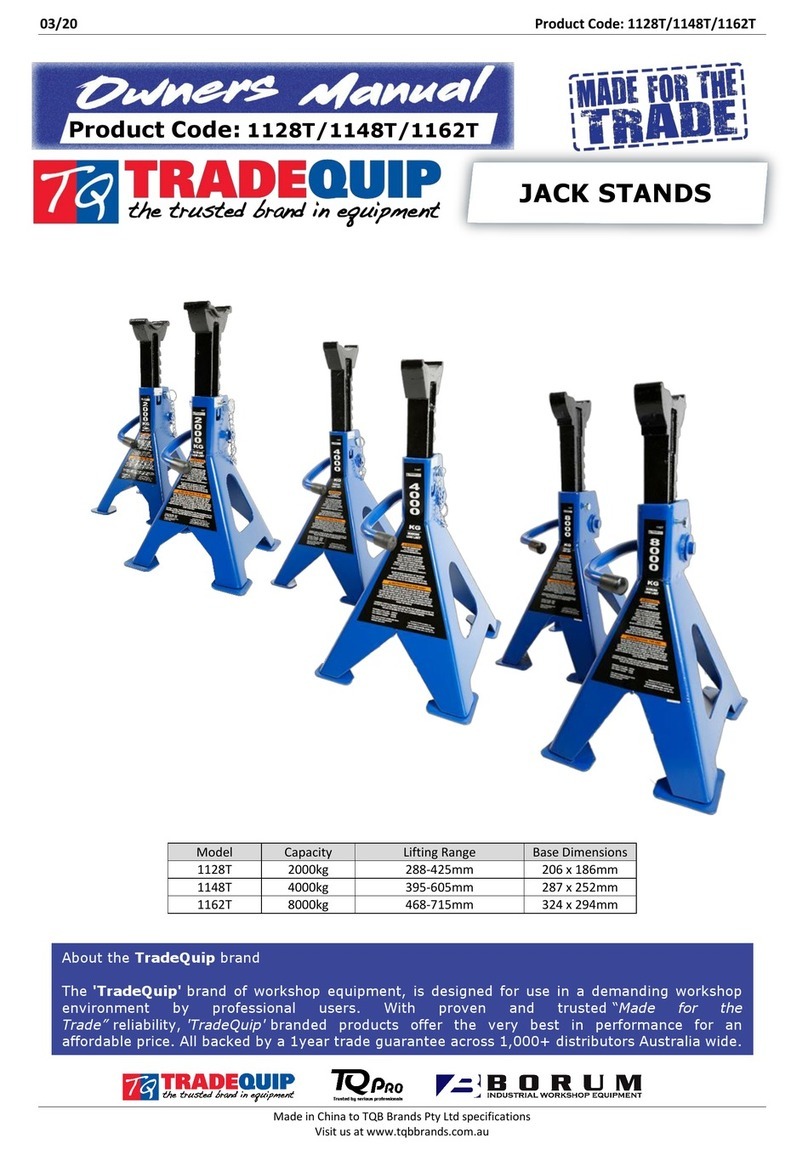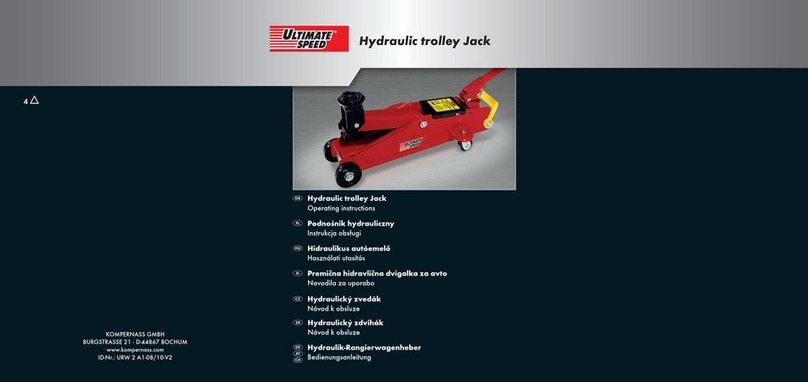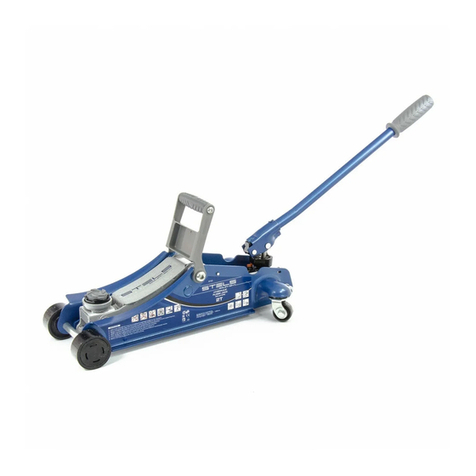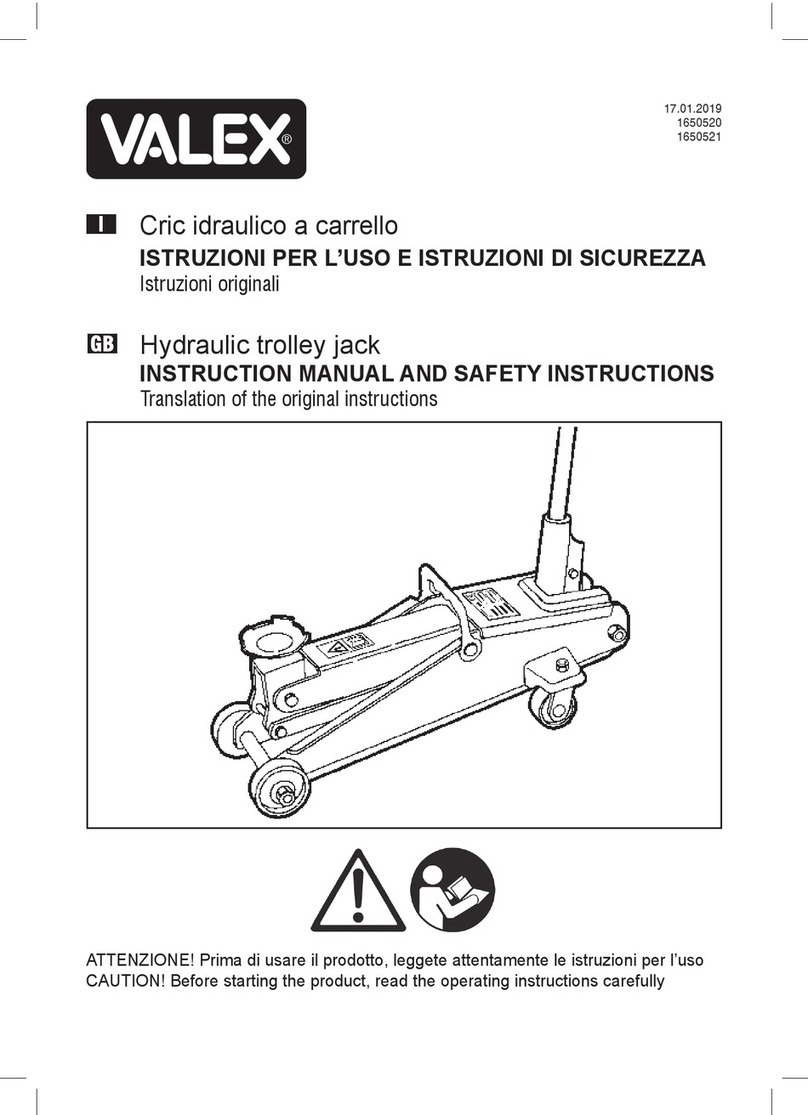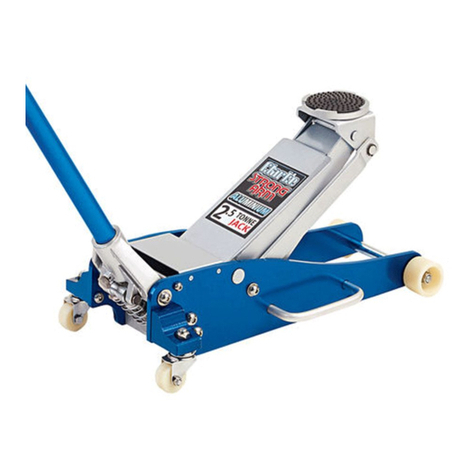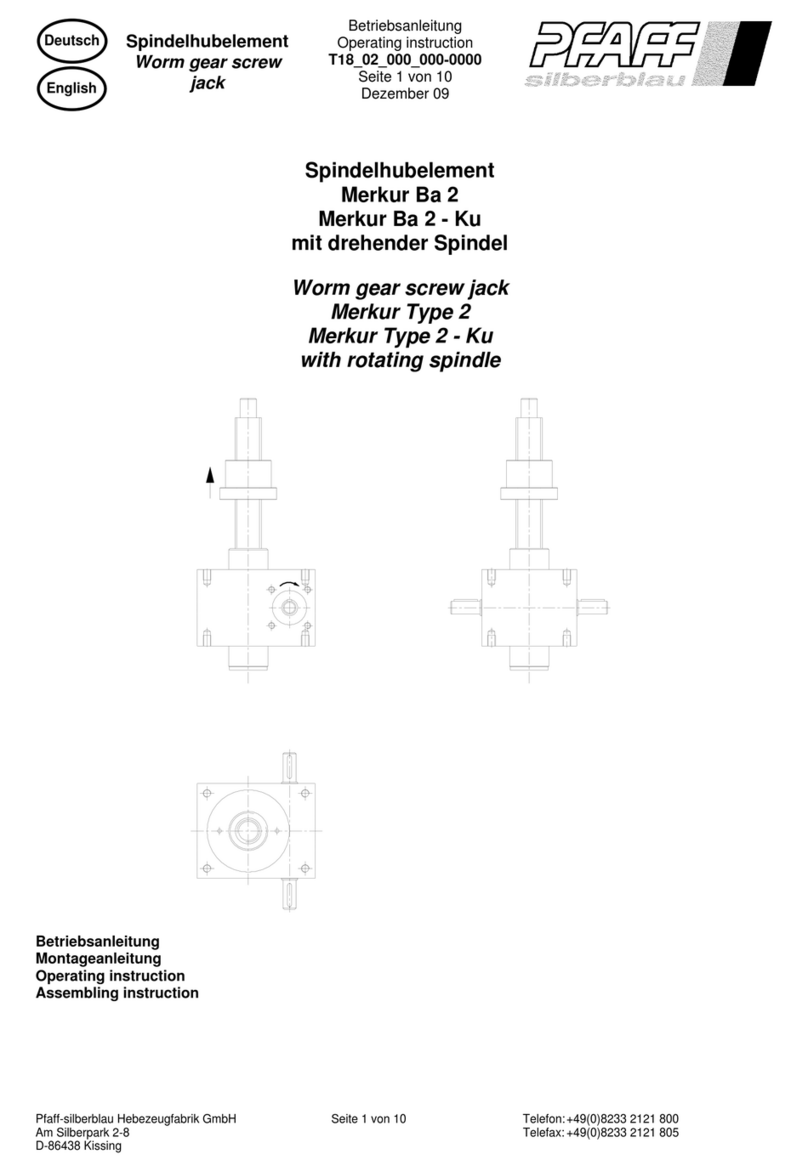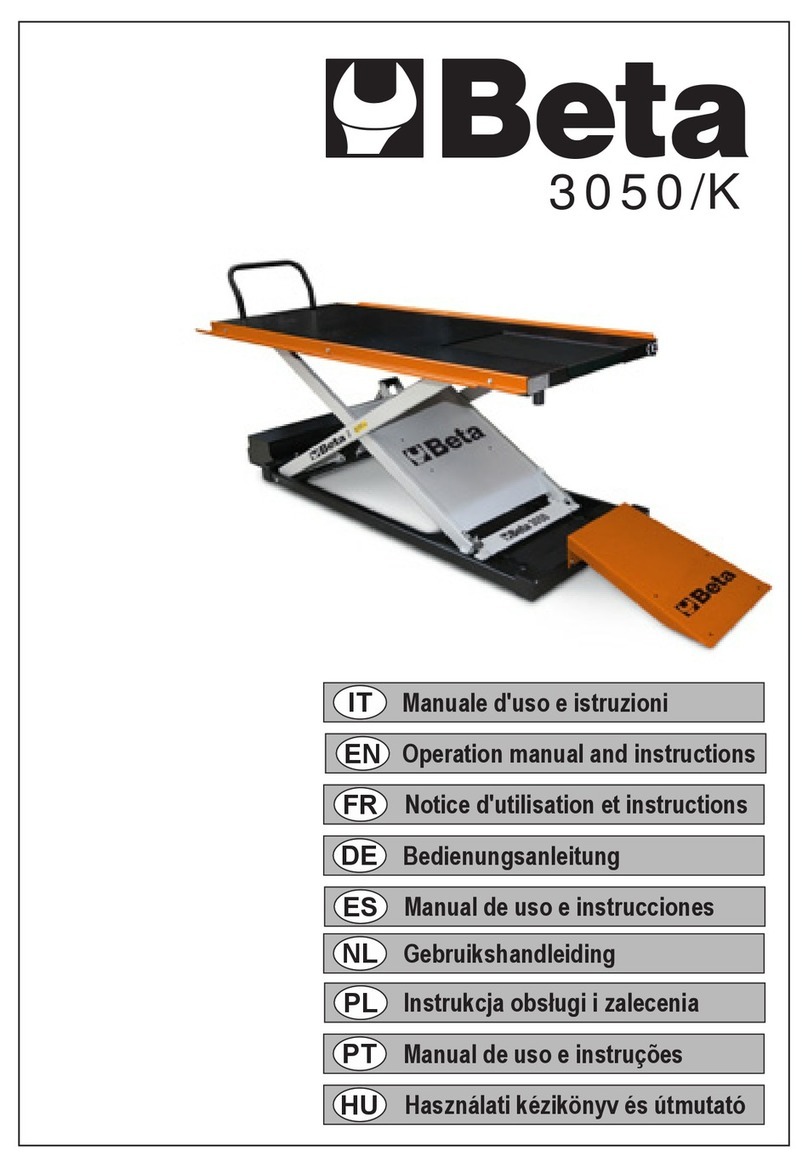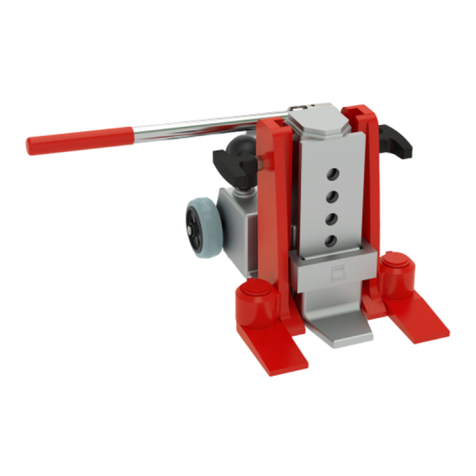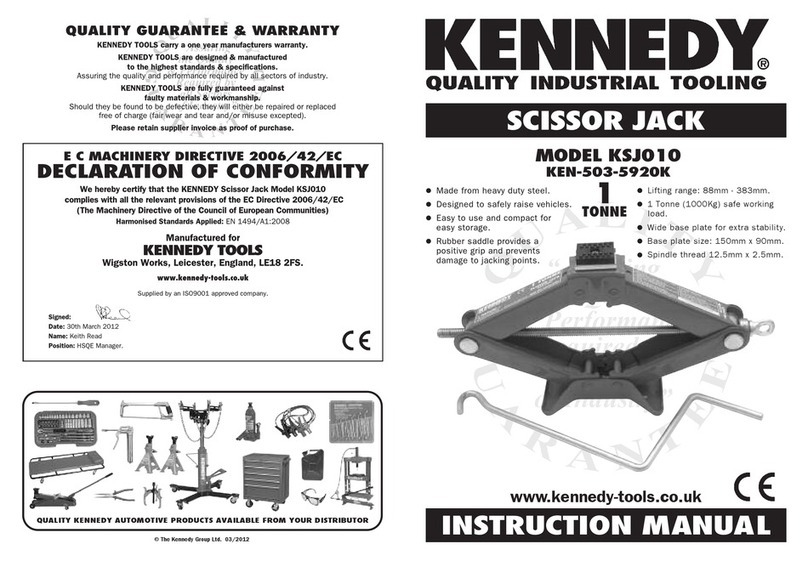
2
• Do not handle pressurized hoses. Escaping oil under
pressure can penetrate the skin. If oil is injected under the
skin, see a doctor immediately.
• A jack when used as a load lifting device, should never be
used as a load holding device. After the load has been raised
or lowered, it always must be blocked mechanically.
• Do not pressurize disconnected couplers.
• Only use hydraulic jacks in a coupled system. Never use a
jack with uncoupled couplers. If the jack becomes extremely
overloaded, components can fail catastrophically, causing
severe personal injury.
• Use only rigid pieces to hold loads. Carefully select steel
aluminum or wood blocks (Refer to Section 10.1 for
additional information) that are capable of supporting the
load. Never use a hydraulic jack as a shim or spacer in any
lifting or pressing application.
• When using a single BLS Series jack, avoid situations where
loads are not directly centered on the cylinder tilt swivel.
The load may slip or fall, causing potential danger. Note:
although usable individually, BLS Series jacks are designed
to be used in groups. Multiple BLS Series jacks will be
required for most lifting applications.
• The system operating pressure must not exceed the
pressure rating of the lowest rated component in the system.
Install pressure gauge(s) in the system to monitor operating
pressure. It is your window to see what is happening in the
system.
• Do not exceed equipment ratings. Never attempt to lift a load
weighing more than the capacity of the jack. Overloading
causes equipment failure and possible personal injury.
• Be sure setup is stable before lifting load. Jacks should be
placed on a flat surface that can support the load. Do not weld
or otherwise modify the jack to attach a base or other support.
CAUTION
Failure to observe and comply with the following
precautions could result in minor or moderate personal
injury. Property damage could also occur.
• Avoid damaging hydraulic hose. Avoid sharp bends and
kinks when routing hydraulic hoses. Using a bent or kinked
hose will cause severe back-pressure. Sharp bends and
kinks will internally damage the hose, leading to premature
hose failure.
• Do not drop heavy objects on hose. A sharp impact may
cause internal damage to hose wire strands. Applying
pressure to a damaged hose may cause it to rupture.
• When using a single BLS Series jack, distribute the load
evenly across the entire saddle surface.
• Do not lift hydraulic equipment by the hoses or swivel
couplers. Use the carrying handle or strap.
• Keep hydraulic equipment away from flames and heat.
Excessive heat will soften packings and seals, resulting in
fluid leaks. Heat also weakens hose materials and packings.
For optimum performance, do not expose equipment to
temperatures of 65˚C [150˚F] or higher. Protect all hydraulic
equipment from weld spatter.
• Immediately replace worn or damaged parts with genuine
Enerpac parts. Enerpac parts are designed to fit properly
and to withstand high loads. Non-Enerpac parts may break
or cause the product to malfunction.
• Hydraulic equipment must only be serviced by a qualified
hydraulic technician. For repair service, contact the Enerpac
Authorized Service Center in your area.
• To help ensure proper operation and best performance, use
only Enerpac oil.
2.3 Additional Safety Precautions - BLS Series
Climbing Jacks
WARNING
Failure to observe and comply with the following
precautions could result in death or serious personal
injury. Property damage could also occur.
• Always do a visual check of each jack before placing it into
operation. If any problems are found, do not use the jack.
Have the jack repaired and tested before it is placed into
operation.
• Never use a jack that is leaking oil.
• Always lift the jack using a crane or other suitable lifting
device of sucient rated capacity. Use only the supplied
jack lifting eyes to attach the jack to the lifting device.
• Allow only trained and experienced personnel to supervise
and perform lifting and lowering procedures.
• Be certain that no persons are working on or near any jacks
before lifting or lowering of the load begins. Alert all personnel
in advance that lifting or lowering is about to occur.
• Keep all personnel clear of the work area while lifting or
lowering is in progress.
• Maintain communication with the operator at all times during
lifting or lowering to avoid accidents. Use hand signals, two-
way radios or other appropriate forms of communication (as
required by applicable laws and regulations) if the load is not
visible to the operator.
• Use caution when inserting or removing cribbing blocks
while the jack plunger is extended. Keep hands and fingers
clear of pinch and crush points.
• Never attempt to insert, remove or adjust the position of
cribbing blocks while the jack is lifting or lowering.
• Operate pump and valves as required to ensure that the load
is lifted and lowered evenly.
• Closely watch the load at all times during lifting and lowering.
Stop lifting or lowering immediately if the load becomes
unstable or appears to be lifting or lowering unevenly.
• Use cribbing blocks of the proper material and size for the
jack model being used. Refer to instructions and precautions
contained in Section 10.1. Also refer to Sections 3.1 and 3.2
for cribbing block dimensions.
• If cribbing blocks begin to crush, deform, crack or splinter,
stop lifting or lowering immediately.
• Ensure that the cribbing block column remains straight as
lifting or lowering is in progress. If cribbing blocks begin to
slide, or if the column tilts or leans, stop lifting or lowering
immediately.
• Read and completely understand the safety precautions
and instructions in this manual before operating the jack or
preparing it for use.
• Operating procedures will vary, depending on the pump
being used with the jacks. Always read, follow and
completely understand all manufacturer's instructions when
operating devices used with the jacks. Follow all safety
precautions contained in the manufacturer's manuals.
• Always fully relieve hydraulic pressure before loosening
hydraulic connections or performing any jack disassembly
or repair procedures.
• Always be certain that the load is fully removed from the
jack before performing any jack disassembly or repair
procedures.
• Refer to sections 10.1, 10.2 and 10.3 for additional jack
safety precautions.
• Always read, understand and follow all safety precautions
and instructions, including those that are contained within
the procedures of this manual.
